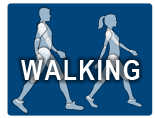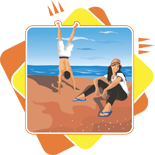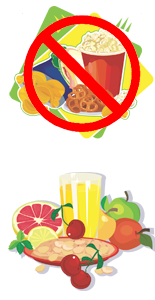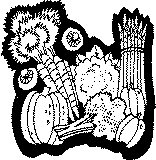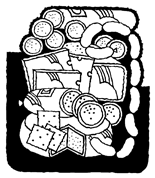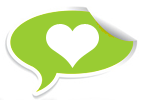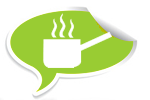BMS Wellness Program
- Health Issues
- Exercise
- Nutrition
- Disease Management
- Stress
- Recipes
Check the latest health information on the links above & below.
|
 |
||
- 2013-2014 Flu Vaccine Information
 (Click symbol to Download and Print)
(Click symbol to Download and Print) - Extreme Weather Health Alert
- Flu Questions & Answers
- Take the FLU IQ Quiz!
- Watch Your Weight!
- Health Recommendations!
- Heart Health!
- Are you at risk for Diabetes? Check yourself with this tool!
- The Naughty List of Holiday Foods
- 10 High-Calorie Holiday Drinks
- Benefits of Handwashing
- US General Health News
- Women's and Men's Health News
- Allergy News
- Medical Word of the Day
- Great American SmokeOut - Nov 17
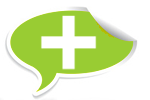 |
Health Recommendations for You? (return to top)
Enter your age and gender in the boxes at left and click "Get Started" to view health recommendations for you. These are important ways you can stay healthy. Talk with your physician about which recommendations are right for you. For additional information on important screening tests click here. |
Watch Your Weight! (return to top)
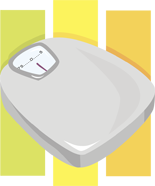 |
Click here for important ways you can keep a healthy weight. Talk with your physician about which recommendations are right for you. |
Check your heart health! (return to top)
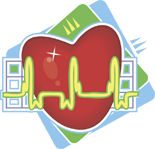 |
Click here for tips on checking your Cholesterol. Click here for tips on keeping your Heart Healthy. Click here for talking with your doctor about Aspirin. Click here for talking with your doctor about Abdominal Aoritc Aneurysms. Click here for tips on checking your Blood Pressure. |
What is your "FLU IQ"? (return to top)
Benefits of Hand Washing (return to top)
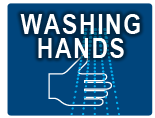 Hand Washing
Hand Washing Washing your hands is the single most important thing that you can do to prevent the spread of infection. Having small open scratches or cuts on your hand could lead to infection entering your body if not kept clean. So wash your hands often.
We harbor many kinds of serious germs on our hands and for many of us, having contact with many people over the course of a day can expose and spread many types of cold, flu, and infectious germs.
Anywhere you come in contact with the masses of the people, there is an unknown source of “cleanliness” and all of us are equally exposed to infectious diseases and sickness.
Hand Washing on Location
A recent study was completed that only 3 in 10 people washed their hands after using the toilet, making inside doorknobs of bathrooms and other rooms potentially the most dangerous thing.
When in someone’s home where there is sickness or illness you should be cautious of using the toilet facilities. NEVER wash your hands using a patient or sick persons facilities, towels or soap. Using liquid hand sanitizers or disposable hand wipes are a better alternative when soap and water are not available to disinfect your hands. Be sure that these materials provide germicidal activity and use them often. Dry with paper towels and dispose in the waste container.
Hand Washing Procedure
You should wash your hands frequently during the day following this procedure:
1. Use a hand-washing sink.
2. Use hot running water.
3. Use antibacterial soap. Scrub hands and forearms aggressively for at least 20 seconds.
4. Use paper towels to dry hands, turn off water and open the door. Air dry machines are not effective for drying your hands completely.
5. Place used paper towels into the trash can before leaving.
Many hand sanitizing products contain high levels of alcohol (60%+) which can cause a serious drying effect, and may also require the use of a moisturizer. Consider a multipurpose, low alcohol product. It is important to remember that using hand sanitizers only sanitize (kills germs) and does not clean the hands.
If you work or have much contact with the public and need to wash your hands often, make sure you clean your hands with soap and water after every 4-5 applications of sanitizer. If tap water is not available, carry or have a bottle of bought water to use. Be sure to use antibacterial soap and dry your hands with paper towels.
Diabetes Check Tool (return to top)
Are you at risk for type 2 diabetes? If you have a family history of diabetes, are obese, or belong to certain racial or ethnic groups you may be at risk. Act now, take the test and know your risk...Great American SmokeOut - November 17 ... (return to top)
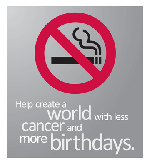 The American Cancer Society is marking the 36th Great American Smokeout on November 17 by encouraging smokers to use the date to make a plan to quit, or to plan in advance and quit smoking that day. By doing so, smokers will be taking an important step towards a healthier life – one that can lead to reducing cancer risk. Read more...
The American Cancer Society is marking the 36th Great American Smokeout on November 17 by encouraging smokers to use the date to make a plan to quit, or to plan in advance and quit smoking that day. By doing so, smokers will be taking an important step towards a healthier life – one that can lead to reducing cancer risk. Read more...
Exercise Information
| |
| |
BMS Walking Challenge (return to top)Get in shape...start walking...walk with BMS! Our employees are walking for health and you can too!Take the BMS Walking Challenge 1) Get a pedometer and clip it to your waistband and it will count all the number of steps you walk, even if you're just going to the fridge for food! 2) Track how many steps you take to walk the dog, do housework, walk around the town. It's amazing to see how many steps you take and try to increase those steps each day. Get out and enjoy the fresh air...if it's raining or you can't get out...walk around the inside of your house. 3) Walking Log - Click here to download PDF and print out to track how many miles/steps you walk in a day. Don't have a pedometer? Call BMS at 330-545-6700! Be Active Your Way... (return to top)Be Active Your Way (open accessible version in new window) Be Active Your Way (open accessible version in new window) Kettlebell Exercises (return to top) OK...your Kettlebell classes are over, now what?! Keep motivated with your Kettlebell workouts by visiting these websites for more exercises. Have an iPhone or Android device...check out the Kettlebell apps! Keep checking back...we'll add additional resources as available. Fitness Magazine - Kettlebell Exercises The content provided on these websites is NOT intended as a substitute for professional medical advice, diagnosis, or treatment. Always seek the advice of your physician or other qualified health providers with any questions you may have regarding a medical condition or starting any exercise program. If you think you may have a medical emergency, call your doctor or 911 immediately. BMS does not recommend or endorse any specific tests, physicians, products, procedures, opinions, or other information that may be mentioned on these websites.
10 Tips to start an Exercise Habit (return to top)1) Make a date...set up a time and day and try to exercise at that same time/day whenever you can. 11 Tips to Keep Motivated to Walk or Exercise (return to top)Studies show that exercising just 15 minutes a day can reduce your risk of cancer and add an average of 3 years to one's life. Click here to read more. 1) Put your favorite walking shoes near the door...they will remind you that you need to get walking. Benefits of Walking (return to top)
|
|
12 Ways to an Active Lifestyle (return to top)
|
|
Nutrition Information
| |||
Take the Snack Test (return to top)Get healthier...eat wiser...eat better with BMS! Our employees are eating better for health and you can too!Eating habits, physical activity and your general lifestyle all have a great impact on your well being. And, being aware of your habits is essential to determine how healthy you are. We at BMS are encouraging everyone to take this simple quiz to become more aware of your health habits. Answering honestly to these questions will only help YOU! Take the BMS Snack Test 1) Do you eat three well balanced meals a day? 2) Do you think you have a preoccupation with food and weight; A distorted body image; or Under eating or overeating under stress? Do you think you might have an eating disorder? 3) When you go out to eat, do you select a restaurant that serves healthy options? 4) Under stressful situations, especially for students during exams, do you deal with stress by eating or do you pre-plan activities, be more physically active and perform relaxation techniques to control the level of stress? 5) Do you limit the amount of alcohol and caffeine that you consume? 6) When you have a cold or flu, do you get plenty of rest and drink plenty of fluids? Do you know when it is time to go see a doctor...when in doubt...call your physician? 7) Do you choose air popped popcorn, fresh fruit and vegetables when you snack? 8) Do you do aerobic act ivies three or more times per week? Do you do resistance training two or more times per week? 9) Do you make attempts to decrease the amount of saturated and trans fat that you consume? Do you try to increase the amount of fiber in your diet? 10) Do you avoid popular diet programs, such as low-carb diets, powdered milkshake formulas, and diet pills? 11) Have you been seen by a medical professional for iron deficiency anemia? 12) Do you limit your intake of soft drinks or caffeinated beverages? Do you drink 10-13 cups of fluid daily, preferably water? 13) Do you select foods that are high in calcium on a daily basis? 14) Do you know the difference between complex and simple carbohydrates? Do you choose whole grain foods? 15) Does your diet include the daily recommended servings from the My Plate Food Guide? Do you know what your "Sodium" intake is? (return to top)
Smarter Snacking Tips (return to top)
| |||
Nutrient Rich Super Snacks (return to top)
|
|||
Make the most of your Munchies (return to top)
|
|||
Disease ManagementWe have listed some of the major disease risks here:
What is Diabetes? (return to top) What is Chronic Nasal Congestion? (return to top) Chronic nasal congestion that occurs is actually a symptom of chronic sinusitis. Chronic sinusitis treatment can be accomplished by first understanding the underlying cause of the condition. Significant congestion may interfere with sleep, cause snoring, and can be associated with sleep apnea. What is Cardiovascular Disease? (return to top) What is Glaucoma? (return to top) What is High Blood Pressure - Hypertension? (return to top) What does High Blood Pressure do to your body? (return to top) How can you reduce your risk of High Blood Pressure? (return to top) What is the DASH diet? (return to top) What is Depression? (return to top) Depressed people may lose interest in activities that once were pleasurable, or suffer cognitive impairments (e.g., difficulty concentrating, remembering details, making decisions). They may contemplate or attempt suicide. Their weight may change dramatically. Insomnia, excessive sleeping, change in sleep patterns (e.g., waking in the middle of the night or early in the morning and being unable to fall asleep again), fatigue, loss of energy, and aches, pains or digestive problems that are resistant to treatment may be present. What is a Stroke? (return to top)
What is COPD? (return to top)
1) Instructions for COPD Management Plan (Click symbol to download PDF) 2) COPD Management Plan (Click symbol to download PDF) 3) COPD Report Card (Click symbol to download PDF) Visit the American Lung Association website for more information. |
Dealing With Stress
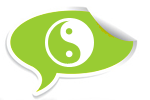 |
What is Stress? (return to top)
1) What causes someone to be stressful?Feeling stressful is an indicator that the body's stress response has been activated producing adrenaline and other chemicals as a response to the fight or flight syndrone. The body reacts to a stressor, real or imagined, and if the stressor persists, it will find ways to cope developing cognitive, emotional, physical and behavorial symptoms. Long term stressful situations can weaken the immune system and bodily funtions start to become impaired, causing ulcers, depression, diabetes, digestive and cardiac problems and more.
2) How do you deal with the stress in your life?
Everyone deals with stress in different ways and some common behavorial symptoms include eating more or less, procrastinating, using alcohol, cigarettes or drugs to relax, sleeping too much or too little, and developing nervous habits, like nail biting, pacing, and scratching. To help eleviate some of these symptoms or the degree to which they occur is to develop good habits like eating a balanced diet and exercise to help your body cope.
3) What can you do to reduce Stress?
Any form of exercise will help reduce the symptoms of stress, including running, walking, exercise machines, weight lifting, biking, hiking, etc. Meditating, yoga, and Tai Chi are also helpful.
Click the EXERCISE tab at the top of the page to view information about the BMS Walking Challenge.
About Yoga (return to top)
1) What is Yoga?
Yoga is an ancient form of personal development utilizing mind, body and spirit. It can be a series of simple stretches, for the elderly and babies, to more involved stretching and the manipulating of arms and legs in different poses for those with more agile systems. The series of yoga poses work to safely stretch your muscles, releasing lactic acid that causes stiffness, tension and pain. Though not Yoga, Tai Chi is another ancient form of stretching and strengthening utilizing mind, body and spirit.
2) Benefits of Yoga
Since yoga is a combination of physical and mental awareness, it has multiple benefits to your health. It strengthens your muscles, increases flexibility, helps with endurance, increases your awareness of your body symptoms and your surroundings, makes you aware of your posture, and as a form of exercise will help with diet and weight control, helps pain prevention, helps with stress reduction and mental calmness. Even someone just starting out performing beginning simple yoga movements will benefit greatly.
About Meditation (return to top)
1) What is meditation?
Meditation is a mind-body relaxation technique used for relaxation and stress reduction. Meditating produces a deep state of relaxation and a tranquil mind. During meditation, you focus your attention on simple, tranquil thoughts and eliminate the negative, jumbled thoughts that may be crowding your mind and causing stress. Through practice, the meditation process produces an enhanced physical and emotional well-being.
2) Why Meditation?
Spending just a few minutes in meditation can restore your calm and inner peace, reducing any anxious, tense and worried thoughts you have. Meditating is simple and inexpensive, it can be performed anywhere and it does not require any special equipment. You can practice meditation wherever you are — whether you're out for a walk, riding the bus, waiting at the doctor's office or even in the middle of a difficult business meeting.
Tips To Manage Stress (return to top)
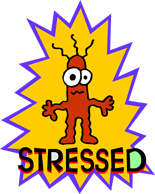 |
Click here for important tips to help manage stress. |



